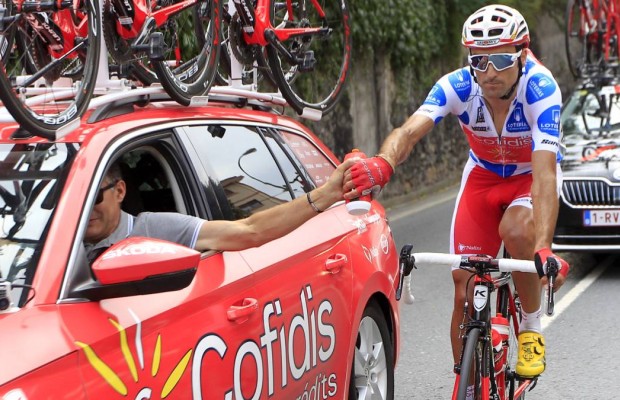What is perceived effort and how to use it in training
If you are one of those who ignore the mathematical world in which performance moves, perceived effort is just the argument you are looking for. We tell you what it consists of and how to use it in your cycling training.

Perceived effort and its advantages
Every day, in a cycling world where watts have been the definitive knock to cadence, speed or heart rate, everything is measured. Everything has a value. Everything? Well, no, there is a different version of training, which is to use perceived effort.
On some occasions we have referred to perceived effort. Basically it consists of not measuring but, as its own qualifier indicates, perceiving.
RECOMENDADO

Change wheels if you want to transform your bike's behavior

What bike size do you need? Here's how to find out

How does age affect performance and recovery?

How long cyclists can be pushed when handed a sticky bottle?

10 tips for safer and faster downhills on road bikes

The best gravel groupsets of the moment

Guiding yourself by your sensations and perceptions has its advantages, of course. In a quantitative world where everything has a number, a data that tells you if you are improving or not, training based on perceived effort can make a difference. Knowing yourself better, knowing your limits better is possible.
Based on that perception, the cyclist organizes his training. He disconnects from the environment, from the smartphone, from the GPS, to connect with himself.
But perceived effort is not totally ethereal: it has to be worked on to give results. You have to establish your scales and analyze what level of effort you carry out so that, when the time comes, you know at what point of effort you are. You can use your own or someone else's scale. And you can also measure but not look, to later compare and see if you were really right or not. That trial and error will forge your perceived effort training-proof.
Tips for training with perceived effort
To train with perceived effort, the ideal is to start without connected devices. Zero influence to start. Later, as we said, you can introduce them in a semi-hidden way so as not to consult them during training but afterwards and thus get to know yourself more and better.
Secondly, establish your own scale from 0 to 10, where 0 is sitting watching the mobile and 10 is that sprint reaching the top of the hardest port, when you think you are going to have to get off the bike. Learn to locate yourself at every moment on that, your scale.
Then, when you have a few sessions, start analyzing the comparison of perceived effort values and real values afterwards. Repeat the process to perfect your sensations. Strava can help you because since last year it has a similar function.

Finally, to train based on perceived effort, spend all the time thinking and analyzing what is happening to you, how you feel, what energy reserves you estimate you have left or when and for how long you could use level 10 of your perceived effort in case you need it (and in fact, try from time to time to see if you are right, with a sprint or a climb that you have previously estimated). It's about getting to know yourself.
Training based on perceived effort will not only make you feel more liberated, but it will allow you to know yourself better. And in competition, when everything hangs by a thread, the one who knows himself best usually manages himself better. Because when everything depends on your head and your legs, knowing where they are and how far they can go, can make the difference between winning or losing.